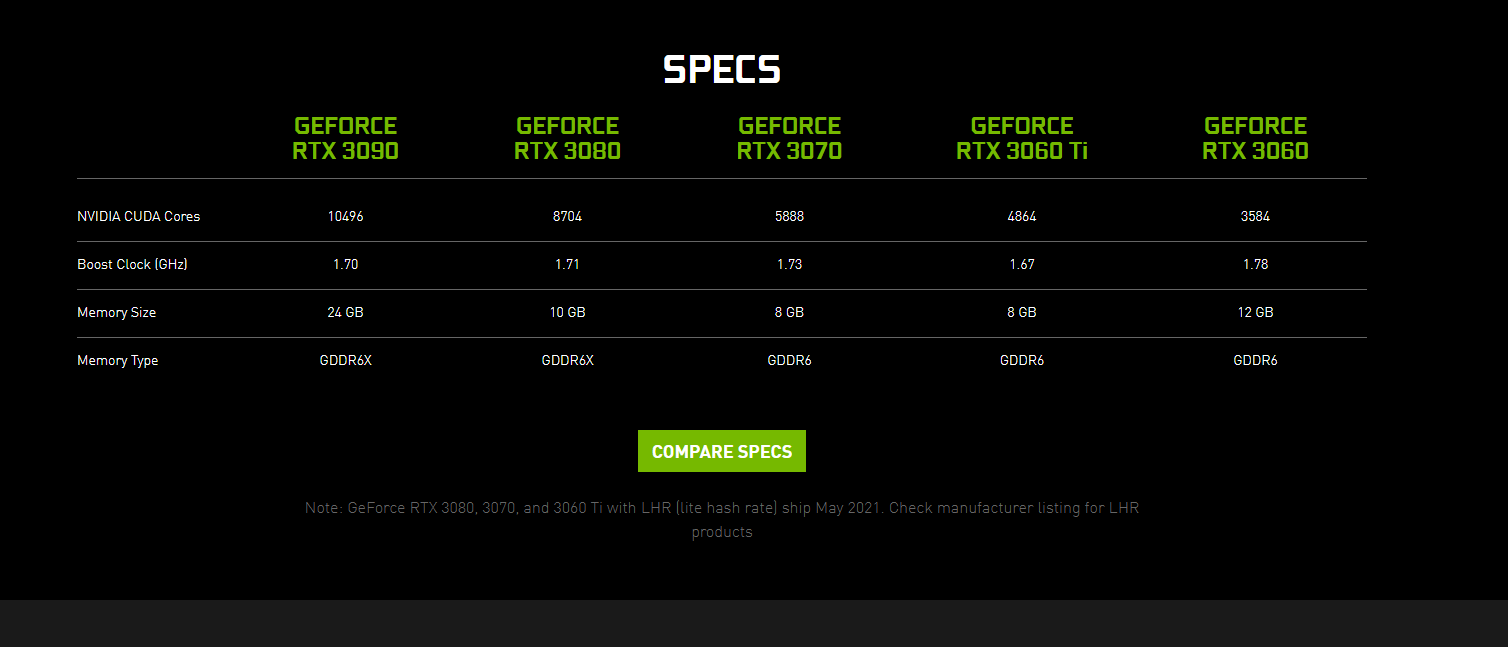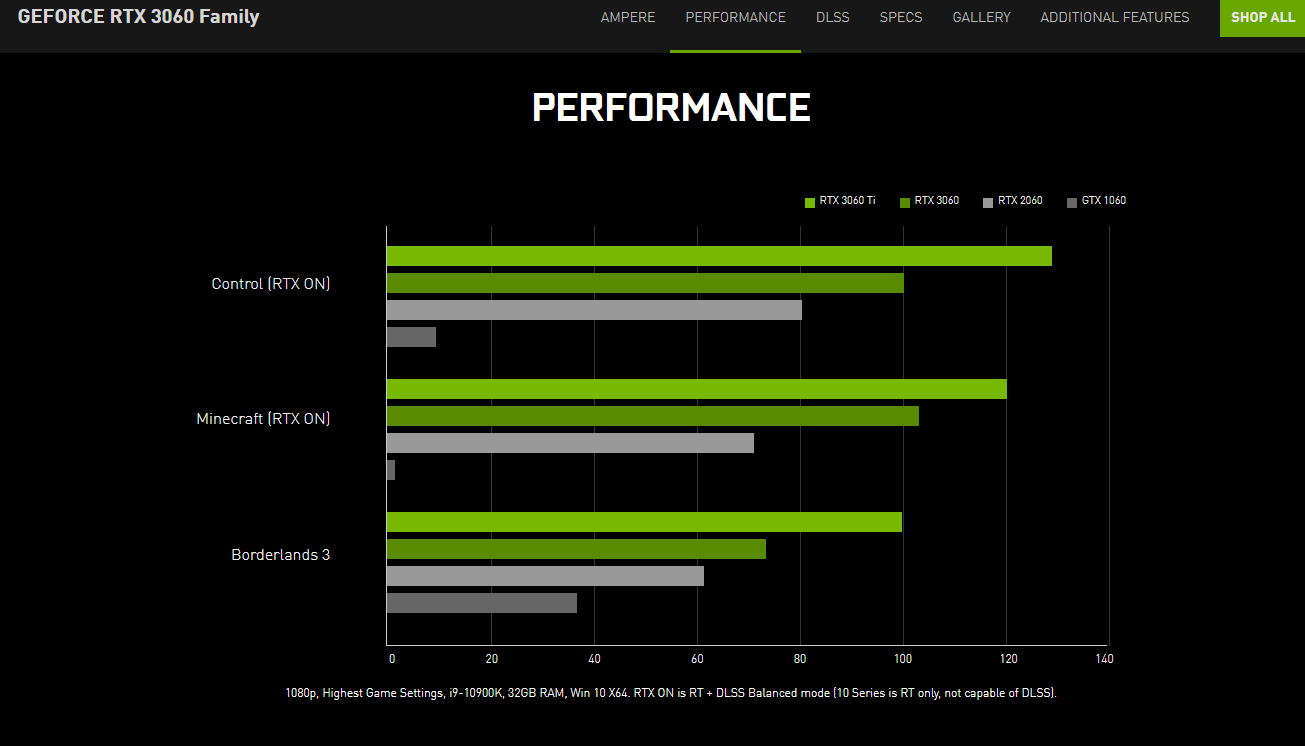Are you considering getting a new GPU? NVIDIA's 30 series of graphic cards might tempt you, but are they the best choice?
In this article, we take a look at the 30 series of NVIDIA graphic cards so you can make the right decision for you and your rig.
What Are NVIDIA's 30 Series GPUs?
NVIDIA's 30 series is a family of graphic cards released in September 2021. Apart from bringing an overall performance increase, the 30 series also brings ray tracing and DLSS to the public.
RTX ray tracing is a powerful tool that changes gaming by simulating light in an environment the way our eyes perceive it in real life.
DLSS, on the other hand, increases your FPS in compatible games by rendering only a select amount of pixels to give you your respective resolution quality without any of the drawbacks.
NVIDIA's 30 Series: What Do You Get for Your Money?
NVIDIA's 30 series consists of seven different GPU models at varying prices and performance. The cheapest card is the 3050 at $160, and the most expensive card is the 3090 at $1500.
Below are the performance metrics for each model.
The NVIDIA GeForce 3050
Currently, the 3050 can only be found in laptops, with a desktop version releasing in July 2021.
Although it's not the fastest laptop GPU on the market, it can manage around 45-60 FPS in most modern games with graphical settings tuned or turned off completely.
But, don't expect to do any 1440p or 4K gaming with this card, as it lacks the power required to get playable FPS at resolutions above 1080p.
The NVIDIA GeForce 3060
The 3060 is this generation's entry-level card for gamers. For the price of $399, you won't have any issue reaching steady performance at over 60 FPS at 1080p with Ultra settings enabled.
The 3060 is a budget card that's perfect for anyone comfortable with 1080p and who wants to max their settings out without worrying about FPS.
However, it only has about a 15% increase in performance compared to the 2060.
If you don't have a 20 series GPU and want to upgrade your build, a 3060 is in the right choice for budget gamers as it is the same price as the 20 series. But if you do have a 20 series GPU, it isn't worth upgrading to the 3060.
The NVIDIA Geforce 3060 Ti
The 3060 Ti is a beefed-up version of the 3060 that sells for $400.
It bolsters a 30% performance increase compared to the 3060. For only a $70 difference in price between the two, it's worth picking up the 3060 Ti if you aren't too strapped for cash.
The 3060 Ti is the first card on this list to be able to handle 4K gaming. However, you will need to decrease some settings and endure mediocre-to-low FPS.
The 3060 or the 3060 Ti will be the best choice for most gamers due to its ability to handle 1080p with ease and its impressive price point.
The NVIDIA Geforce 3070
The 3070 reaches RTX 2070 performance at the sustainable lower price of $499.
This card is for anyone not satisfied with 1080p gaming but who doesn't want to spend an excessive amount of money for a card that comfortably runs 4K resolution.
The 3070 can effectively make use of RTX ray tracing and offer fantastic performance at 1440p.
Like the 3060 Ti, it can handle 4K, but if you are looking for 4K gaming, this card will most likely be too weak for you.
The 3070 is the same price as the 2070 but is around 50% faster. This makes the 3070 a perfect choice for anyone looking for a card that excels at 1440p.
The NVIDIA GeForce RTX 3080
The 3080 doesn't bring much of a performance increase from the 3070, only about 10%, and sells for $200 more.
However, the 3080 can handle 4K gaming well enough and sells for only $700.
This card is only worth the price if you have a compatible CPU and peripherals for 4K gaming. If you are satisfied with 1080p, this card is overkill.
The NVIDIA GeForce RTX 3090
The 3090 is only about 20% faster than the 3080 and not worth the price for most. Gamers won't get much improvement out of this card as the added 14Gbs of memory has little use in gaming.
This card sells for a whopping $1500 but brings similar performance to the 3080, making the 3080 the best choice for gamers serious about performance.
NVIDIA's 30 Series: Reasons to Upgrade
The 30 series is the only series that can hand handle both NVIDIA's RTX ray tracing and DLSS.
The power-per-dollar of these cards is miles ahead of generations before it.
There are GPU models for every gamers' budget.
The 30 series cards are the same price (if not cheaper) than the previous generation 20 series cards. So, if you have a card weaker than a 20 series card, you will get two generations of performance for the price of one.
The 3080 is a great entry point into 4K gaming.
NVIDIA's 30 Series: Reasons to Not Upgrade
While ray tracing does offer lighting improvements to select games, it doesn't always warrant the massive performance decrease that comes with it.
There's also a chance ray tracing is a stylish marketing tool that will be abandoned by NVIDIA in the coming years, much like NVIDIA HairWorks.
At the time of writing, price gouging is a massive issue for these cards. Cards like the 3060 can only be found on resale shops for upwards of $1,500 dollars.
The AMD 6700 XT has comparable performance to the 3070 and can be a worthy alternative for anyone who doesn't want to wait for a restock on the 30 series.
The difference between the 20 series and the 30 series isn't enough to warrant the purchase.
NVIDIA's 30 Series: Is It Worth Upgrading?
It depends on what you are looking for in a gaming experience.
If you are looking to get into 4K gaming, it's worth it for you to skip over the high-end 20 series cards and go for the 3080.
If you want to get maxed-out graphics at 1080p resolution, then a 3060 or a 3060ti are great choices at market price.
However, gamers who already have a 20 series card already won't see much of an upgrade from a 30 series card.
For anyone solely interested in gaming, buying a 30 series card at the exorbitant cost resellers are currently listing it at is simply not worth it.
NVIDIA has already placed restrictions on bitcoin mining on these cards to curb the demand. Hopefully, these measures will bring down the price of the 30 series cards and get them into the hands of more gamers.
Image Credit: NVIDIA



